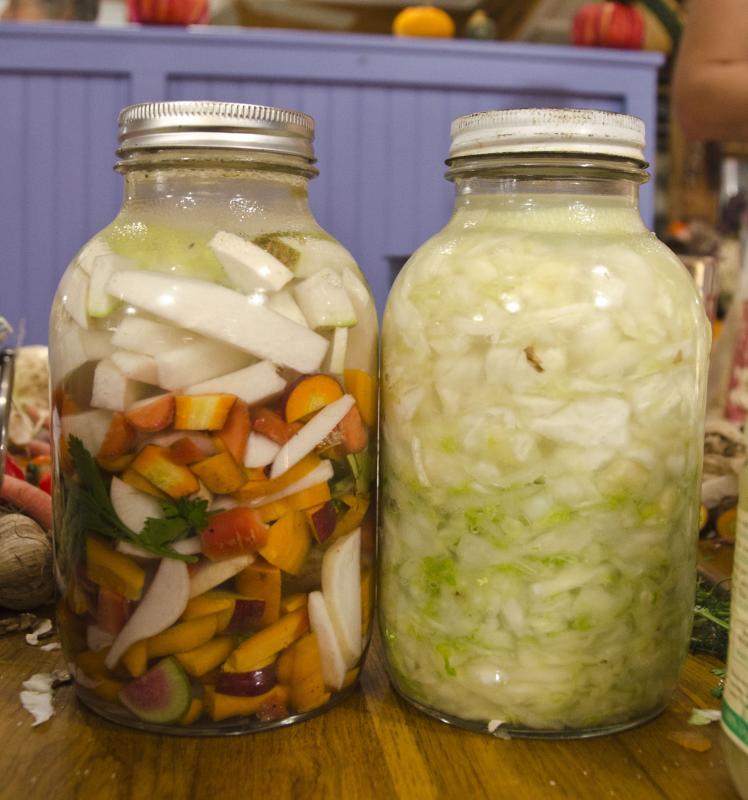Embracing the fungus among us: Fermentation specialist teaches the art of brining
When food in your kitchen ferments, it tends to be more of a negative than a positive. That doesn't have to be the case though, says fermentation specialist Laura Killingbeck.
Killingbeck began a three-part series on fermentation at How on Earth Wednesday night and said there is a lot of healthy bacteria to be had by intentionally fermenting vegetables.
When done right, fermentation produces a safe, nourishing live culture as microbes break down the sugars in vegetables. Killingbeck described fermentation as "capturing life."
"When you pick a vegetable, it's not actively dying. It still contains living cells," Killingbeck explained. "Some of the cells will start to die off and release their nutrients. Bacteria and fungi use this. We can take advantage of the process."
The idea of intentionally cultivating bacteria and fungi may sound unappealing, but sauerkraut, kimchi, pickles and beer all undergo a fermentation process that results in the production of thousands of microbes.
Killingbeck said the process also creates a "probiotic effect" (as opposed to antibiotic) and can help with digestion and alleviate some diseases.
To start, all you need is a vegetable. Killingbeck said all vegetables can be fermented, though the shelf life varies. There are two basic fermentation methods: dry salt and brining.
With dry salt, vegetables are chopped, salted (1.5 to 2 teaspoons per pound) and packed tightly into a food safe container until they are immersed in their own liquid. The contents are then weighed down with a heavy object to keep the vegetables submerged. The liquid prevents airborne bacteria and fungi from growing. The fermenting veggies can be tested in a few days and left for more than a year, depending on the taste and variety of vegetable.
"It will start to froth and bubble," said Killingbeck. That means the microbes are working and will slow down after a few days.
Brined vegetables are packed into a jar and have a brine of about three tablespoons of salt to a quart of water poured over them. Killingbeck said cucumber pickles are most often fermented in this way. Carrots, beets, string beans, cauliflower and onions are also good options for brining. Add a plug or heavy object to keep the vegetables submerged.
Most importantly, put a lid (not airtight) or cloth over the container to keep out flies, and skim any mold that forms on the plug or surface.
When the taste is just right, Killingbeck said she puts them in the refrigerator where they can last indefinitely.
No matter when it is consumed, there will be some healthy benefit, she said.
"It's all good."
Killingbeck suggests Sandor Elliz Katz's book, "The Art of Fermentation" as a guide for learning about the process.
The live culture fermentation series continues with medicinal live-culture sodas on Wednesday, Nov. 5 and herbal beers on Nov. 12. For more information, call How on Earth, located at 62 Marion Rd (Route 6) at 508-758-1341.













